The 3rd ML4NGP Training School successfully wrapped up last Friday, after an intensive and insightful week of theoretical and practical sessions. Hosted at CEITEC in Brno, this year’s event brought together leading experts and eager trainees to explore the latest advancements in NMR spectroscopy and related techniques. The school provided a comprehensive curriculum covering fundamental principles, advanced methodologies, and interdisciplinary applications.
The training school kicked off with an engaging talk by Lukáš Žídek, who provided an excellent introduction to the basic principles of Nuclear Magnetic Resonance (NMR). Participants then had the opportunity to visit the NMR facilities at CEITEC Brno, getting first hand exposure to state-of-the-art instrumentation. The afternoon sessions transitioned into more advanced topics, with Michele Vendruscolo and Gyula Batta delivering insightful lectures on chemical shifts and diffusion NMR.
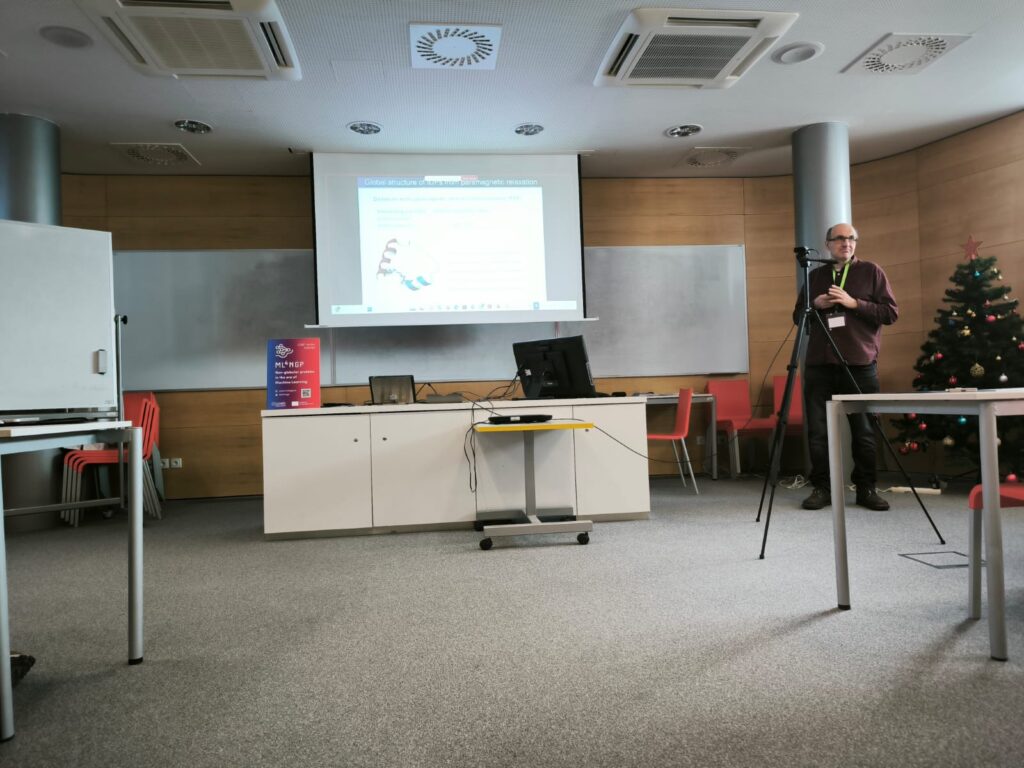
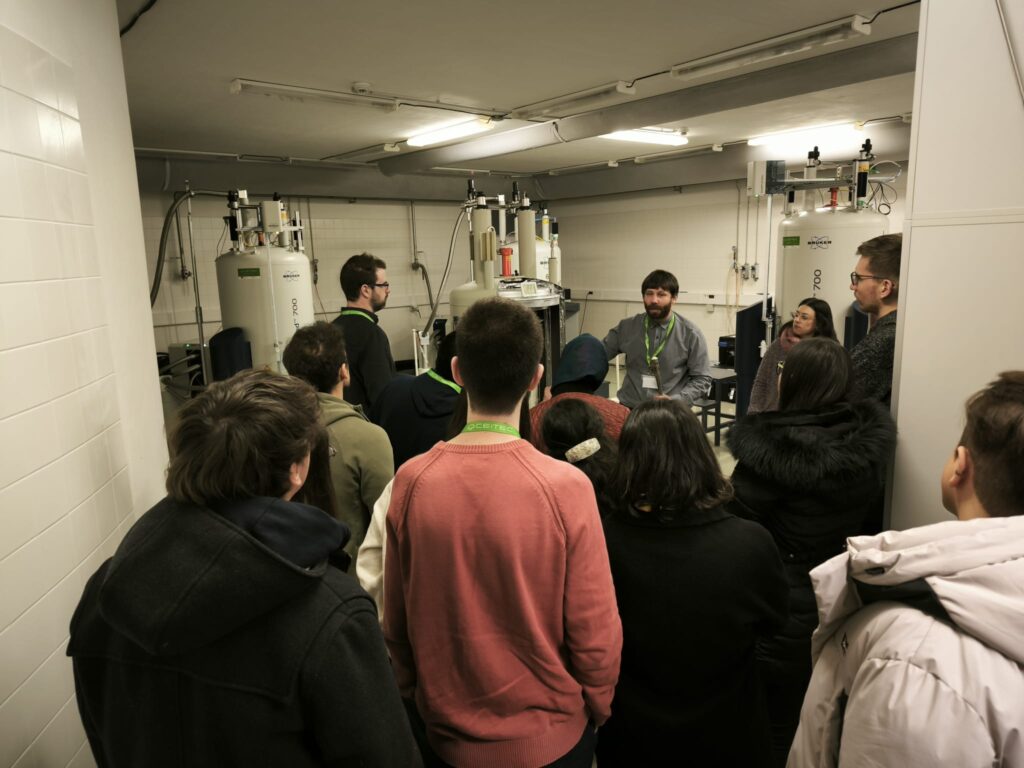
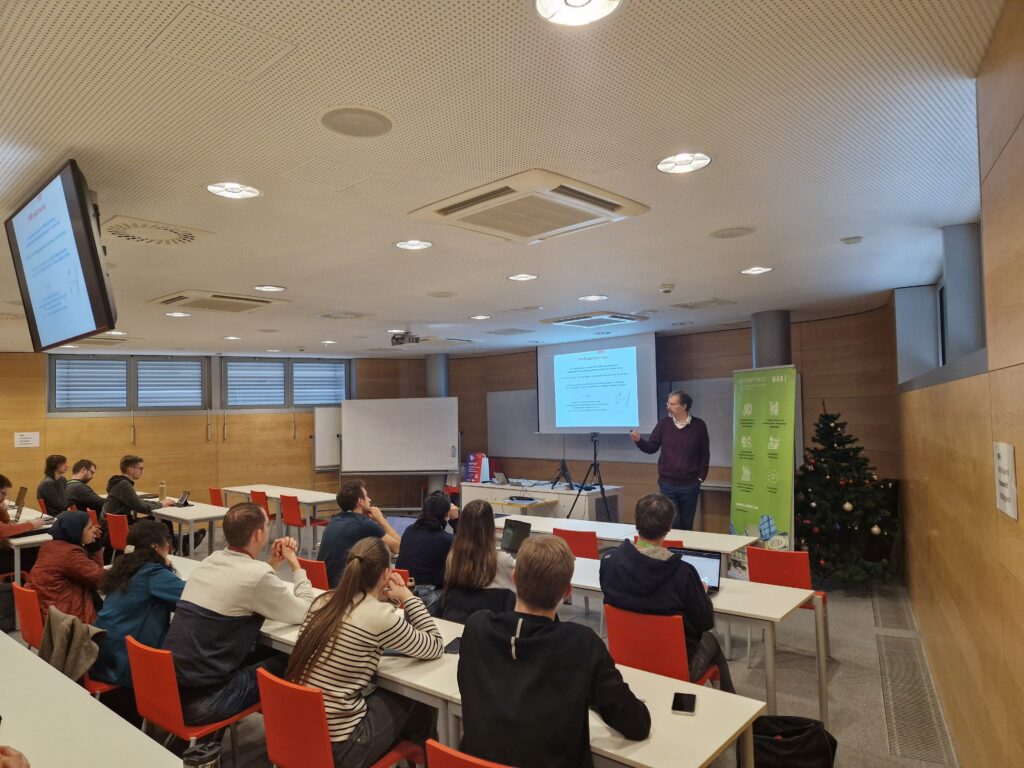

Photos from the participants at the 3rd ML4NGP Training School at CEITEC, in Brno.
The second day focused on J coupling as a tool for structural and dynamic characterization of Intrinsically Disordered Proteins (IDPs), led by Frans Mulder. The session highlighted the power of NMR in studying flexible biomolecules. The afternoon brought a session with Fabien Ferrage, who explored NMR relaxation, providing participants with a deeper understanding of molecular dynamics.
The midweek sessions introduced participants to NOE NMR for 3D structural characterization of proteins, with an expert talk by Jiří Mareš. In the afternoon, Dennis Kurzbach discussed utilisation of unpaired electrons in NMR and the focus briefly shifted beyond NMR as he introduced Electron Paramagnetic Resonance (EPR), showcasing new opportunities and complementary techniques for studying IDPs.
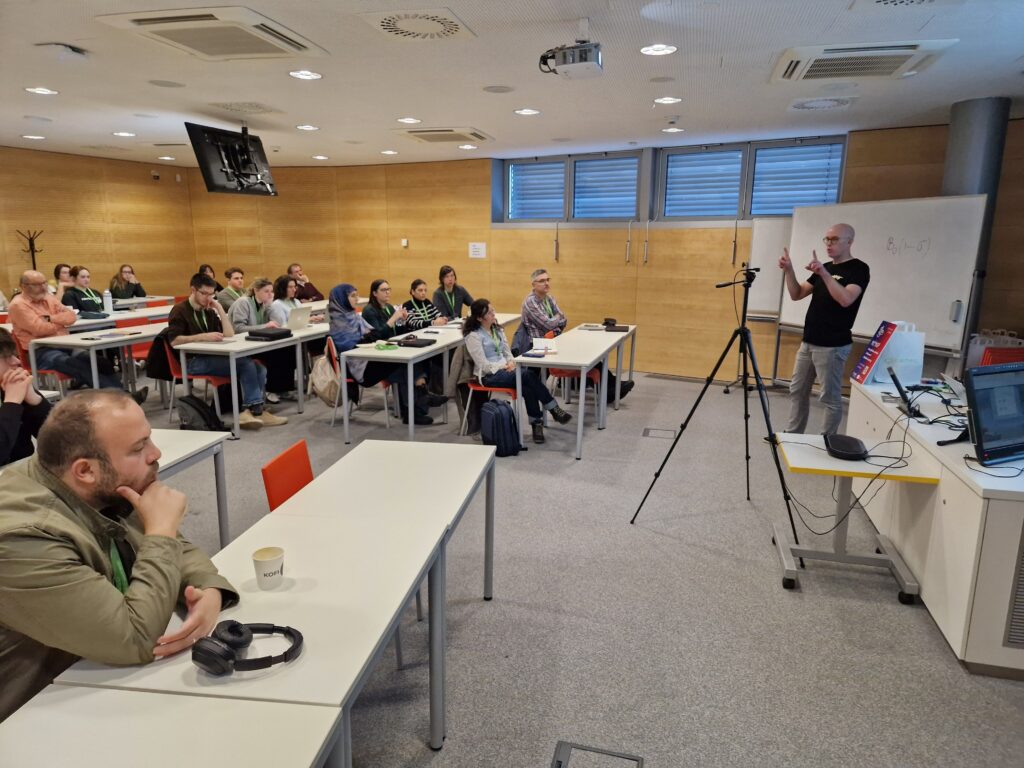
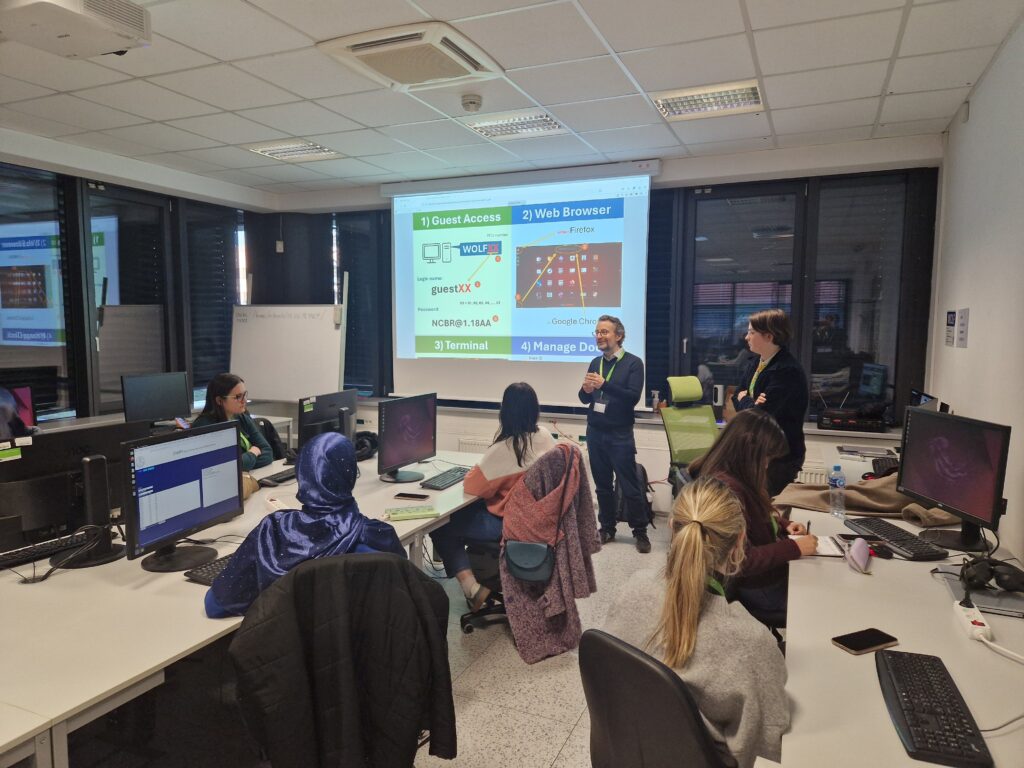
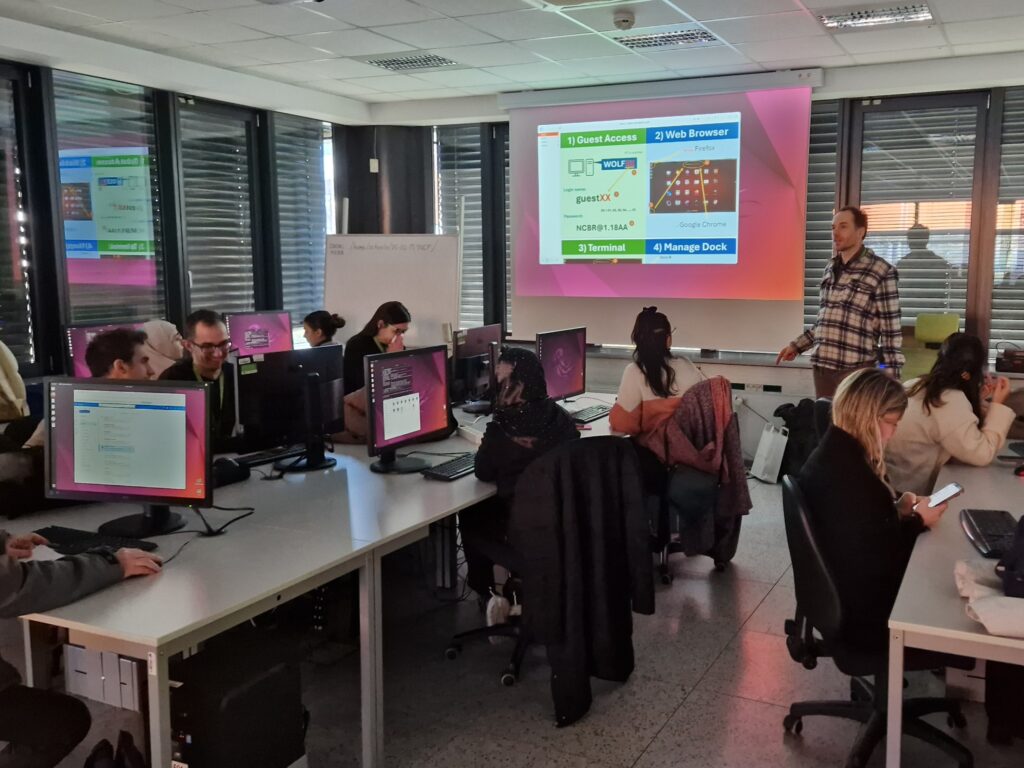
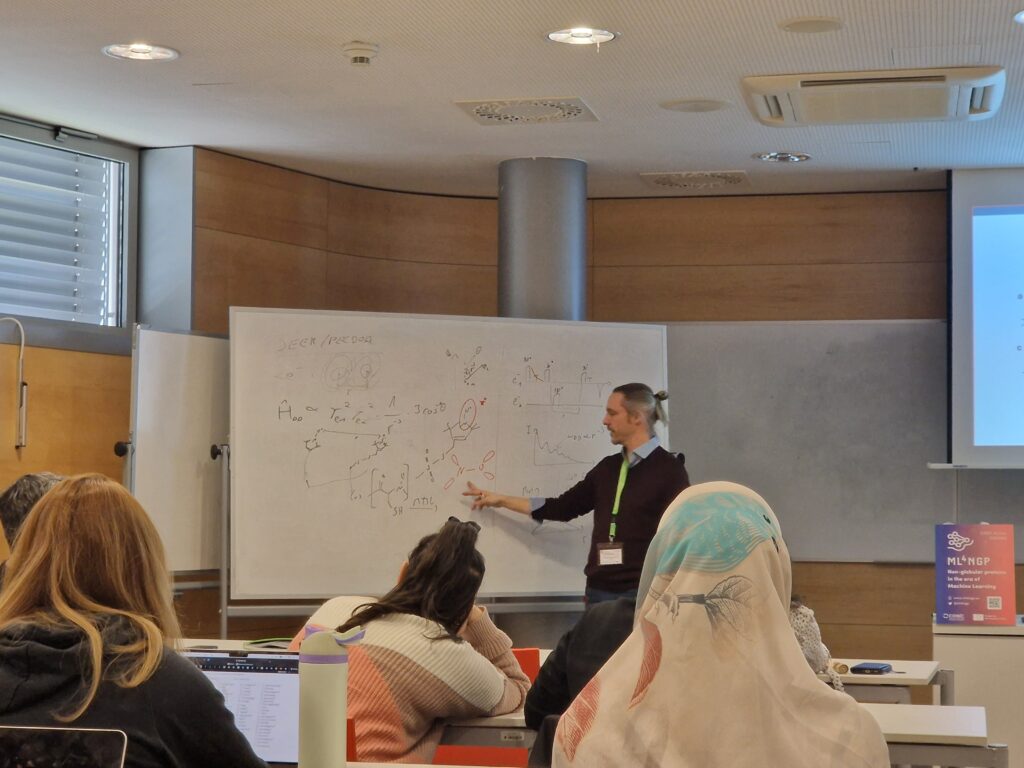
Photos from the theoretical and practical sessions at the 3rd ML4NGP Training School in Brno.
Hugo van Ingen explored interaction studies using NMR, providing hands-on exercises and discussions that engaged all participants. Later, Marco Schiavina presented the magic of dipolar coupling and cross relaxation, further expanding the trainees’ understanding of structural biology applications.
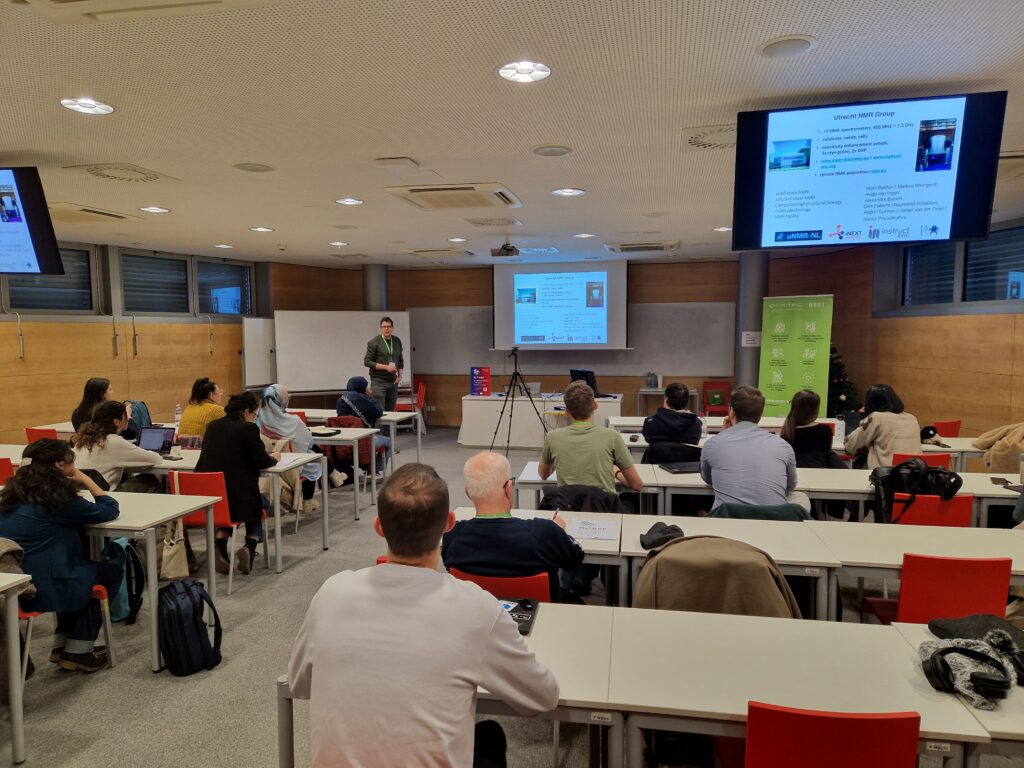
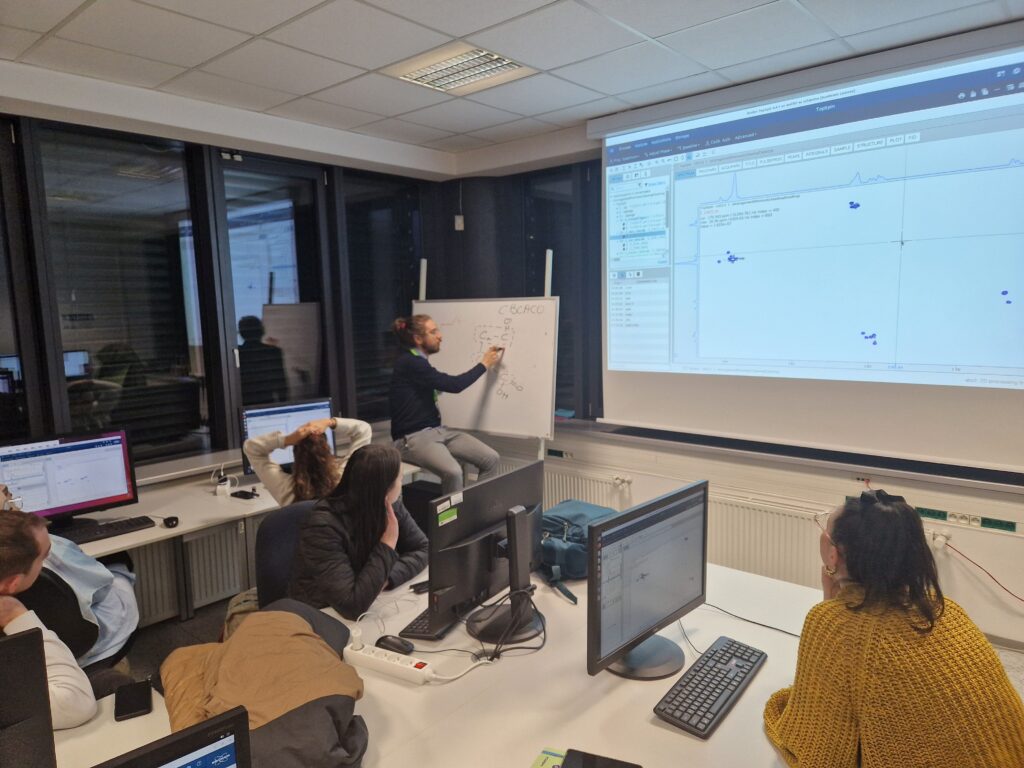
Photos from the theoretical and practical sessions at the 3rd ML4NGP Training School in Brno.
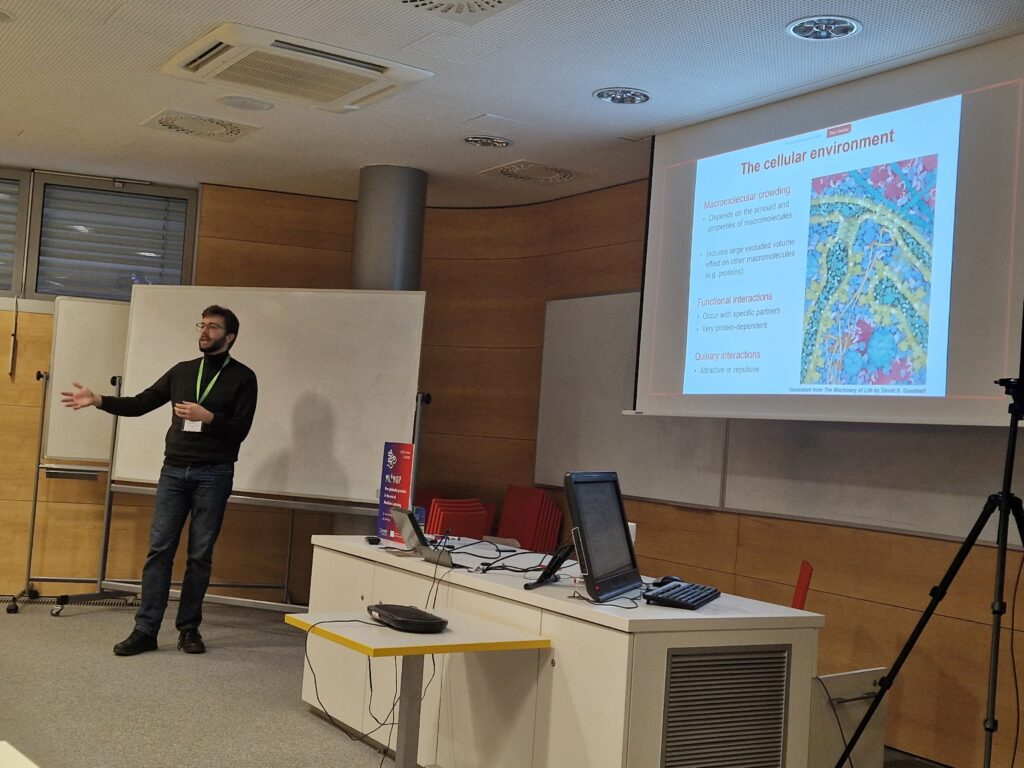
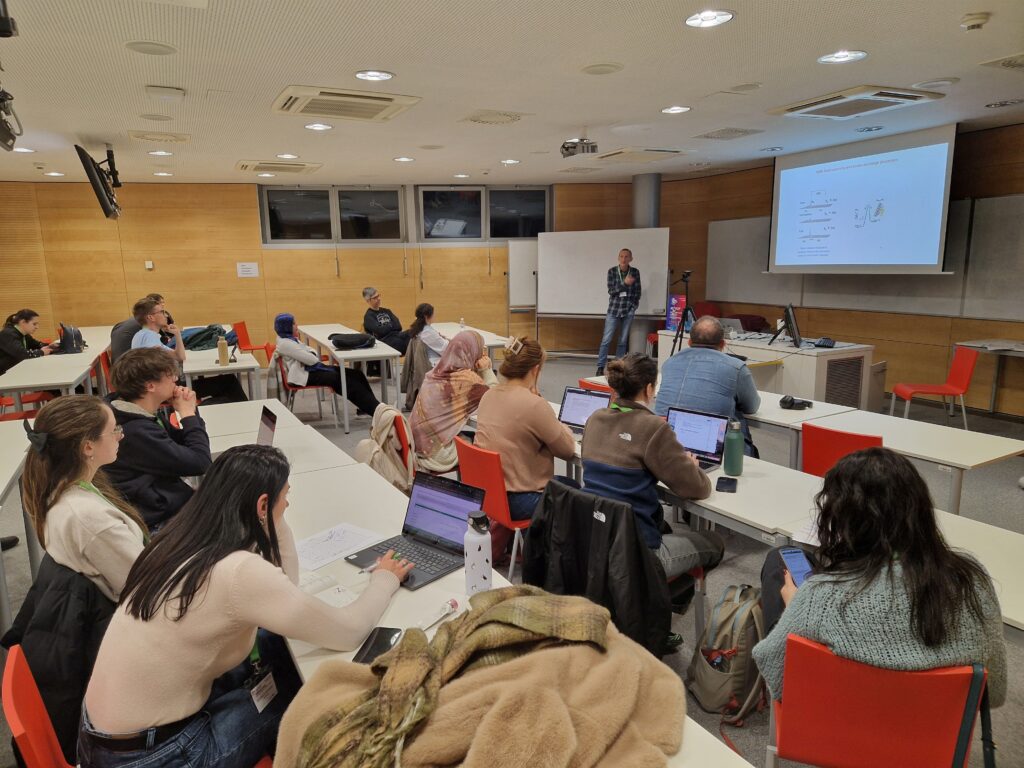
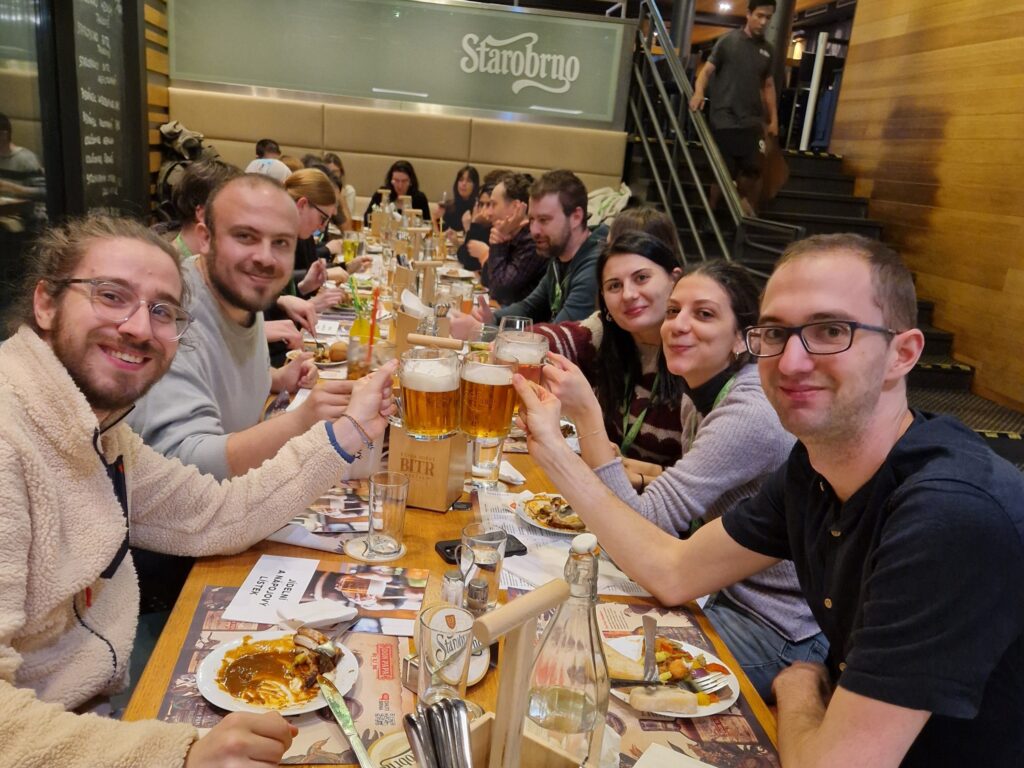
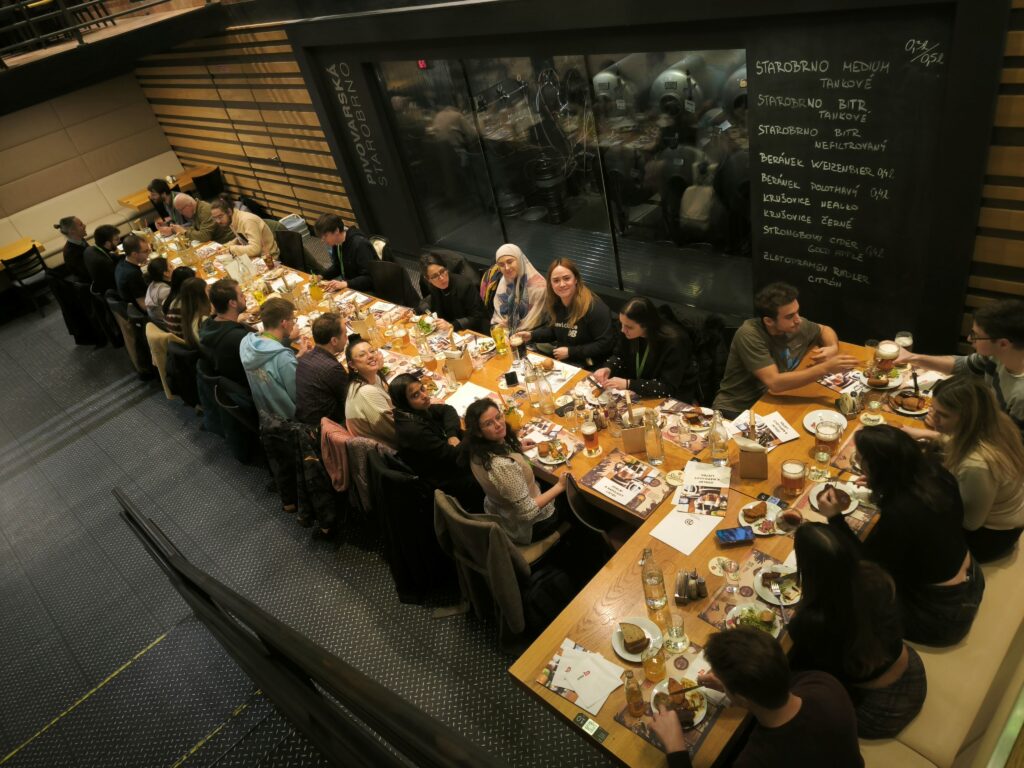
Photos from the last day sessions and the social event in the 3rd ML4NGP Training School in Brno.
The final day of the training school focused on approaches to tackle complex biomolecular challenges including post-translational modifications studied with NMR introduced by Isabelle Landrieu and in-cell NMR for studying proteins in their native environment presented by Enrico Luchinat. The day culminated with a presentation by Martin Blackledge explaining how to build IDP ensembles using NMR data.
The training school was well put together, and Pavel with CEITEC-MU and students did a great job organizing it. Experts covered the basics and more advanced aspects of using NMR to study the structure and dynamics of IDPs. I believe the practical sessions were a highlight! Trainees got hands-on experience working with NMR data, applying the concepts they learned in the theory sessions. Overall, it was a great mix of learning and practice, and I hope the interactive format made it a valuable experience for everyone involved. Zuzana Bednarikova, ML4NGP Vice-Chair
A Week of Learning, Collaboration, and Inspiration
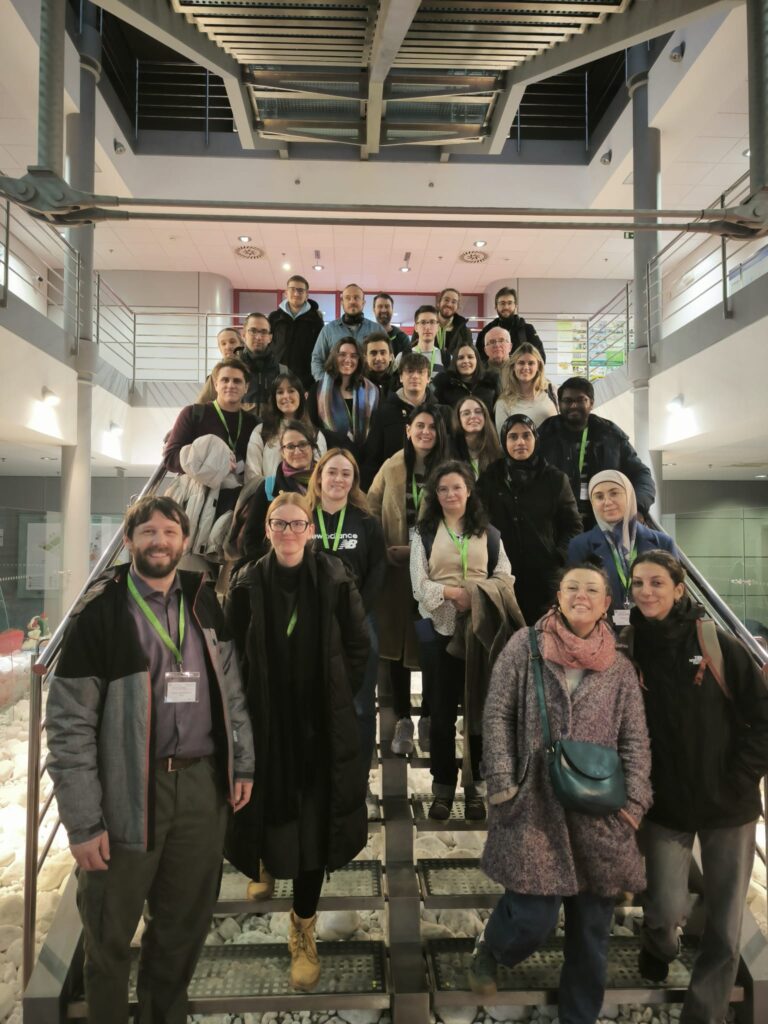
The 3rd ML4NGP Training School ended with an engaged community of young researchers equipped with new knowledge and skills to advance their careers. The event successfully fostered scientific discussions, hands-on learning, and interdisciplinary connections, laying the groundwork for future breakthroughs. This course would not have been possible without the support of the local facilities at CEITEC, especially in providing the best conditions for the practical sessions. We also acknowledge the e-INFRA CZ project (ID:90254), supported by the Ministry of Education, Youth and Sports of the Czech Republic, for providing part of the computational resources used during practical sessions.
I feel that this Training School was successful overall, at least according to the feedback from both trainers and trainees. Of course, there is always room for improvement. In the beginning, it was probably difficult for some participants to get used to the operating system and the software. Nevertheless, I am glad that we did not give up on the practical part, even though it was the most challenging part in terms of organization, both in terms of preparation and execution. It is important to emphasize that we could not have done it without the support of the other people in our institution (system administrators, administrative staff and students). Pavel Kadeřávek, Local Organizer
We look forward to the next edition of ML4NGP Training School, continuing to inspire the next generation of researchers in the field of machine learning and non-globular proteins.
